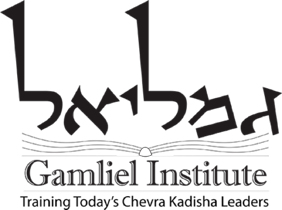Sewing Tachrichim
Sew What?
“Threads of Tradition” will make tachrichim.
Why bother organizing a group to sew burial garments – and convincing people to overcome their squeamishness about death – when you can just buy them from New York?
It’s about affirming people’s humanity by getting them to take care of each other. It is a way of fulfilling the mitzvah of chesed shel emet – “true kindness which cannot be repaid.” It confirms the value of participation by lay members of the community rather than delegating the duties to trained professionals. It provides a discrete project that is rich in Jewish content and spiritually meaningful, taking values that are often preached-about and letting people be able to really make some direct impact in a very loving way.
You don’t know if this is your kind of work until you do it. On the one hand it’s kind of ghoulish. But it forces you to take your life and other people’s lives seriously.
Tachrichim traditional, simple, white burial garments
| mitznephet | head covering |
| michnasayim | pants |
| k’tonet | shirt |
| kittel | jacket |
| avnet | belt |
| tallit | prayer shawl (we won’t be making these) |
| sovev | sheet (we won’t be making these) |
Tachrichim by Me’irah Iliinsky
Tachrichim, in Hebrew is tet-chaf-resh-yud-chaf. The root, chaf-resh-chaf, means to bind, enwrap, surround. Tachrich means a robe. In “late” bibilical Hebrew, kerech meant scroll. It appears in Esther 8:15:
“And Mordechai went out from the presence of the king in royal apparel of blue and white, and with a great crown of gold, and with a -wrap- of fine linen and purple: and the city of Shushan rejoiced and was glad. The Jews had light and gladness, and joy and honor.” (That last verse is one we recite in Havdallah every week.)
This is from the classic: Brown, Driver, Briggs Hebrew and English Lexicon reprinted from 1909 (Coded with Strong’s Concordance numbers 1999) (which erroneously said chapter 9, not 8.) The English translation of the verse is from The Jerusalem Bible, Koren Publishers.
The tet in front of the root is either a future, or a command form–“you will wrap.”
Rabban Gamliel
“Rabban Gamliel was one of the wealthiest people in the land. And yet he made a decree that when he died, he should be buried in a plain white robe that has no pockets, because you can’t take it with you, and in a plain pine box. MIPNEY KIVODAM SHEL HA ANIYIM, out of respect for the feelings of the poor. And that has been the Jewish way ever since! From Rabban Gamliel on, Jews are buried in a plain white robe, that has no pockets in it, and in a plain pine box, in order to remove the pressure to keep up with the Joneses, and to have a fancy funeral…Ever since Rabban Gamliel, a fancy funeral is ILLEGAL in Judaism!
– Rabbi Jack Riemer “The Meaning of Our Work” KAVOD V’NICHUM ADDRESS Founding Conference, Rockville, MD. June 22-24, 2003
Threads of Tradition
Lynn Greehough writes, “The garments should have no knots and neither should the thread used to stitch the garments be tied in knots. …The pattern used for the takhrikhim was the same for men and for women except for the mitznefet. The women’s bonnets were edged with a border of lace.
“. . .Keeping costs down was one factor in the decision to have locally-made shrouds. To some degree, this decision could be perceived as a group’s local protest against the commercialization of a particular Jewish tradition. It might demonstrate a reclaiming of a sense of community responsibility, to continue a cherished tradition.” — Greenhough, Lynn “We Do the Best We Can“: Jewish Burial Societies in Small Communities in North America. A thesis submitted in partial fulfillment of the requirements for the degree of Master of Arts in Leadership and Training at Royal Roads University, Victoria, B.C., Canada, April 2001.
What is going on in Silicon Valley? The South Bay Chevrah Kadisha offers traditional tahara, the ritual washing and dressing if the deceased, but many Jews are unfamiliar with the option and do not request it. At Congregation Beth David, there is a cemetery committee, the Cherat Chesed committee which coordinates providing meals to shiva homes, and a group of volunteers who have served as shomer – guards – sitting with the deceased from the time of preparation (ritual washing and dressing and placement in the coffin) until burial. Synagogue members have coordinated, lead, and participated in shiva minyans. Now there is an opportunity to help in another way, by making tachrichim for use by anyone in our community who will be having a traditional Jewish funeral.
If you would like to participate in one of the Threads of Tradition Sunday workshops, e-mail ESMenkin@aol.com or call 408-297-9129 and leave your name and phone number. No sewing expertise is required. If you cannot sew even a stitch, you can help by donating clean, plain white full-size or queen-size flat sheets for use as sovev.

